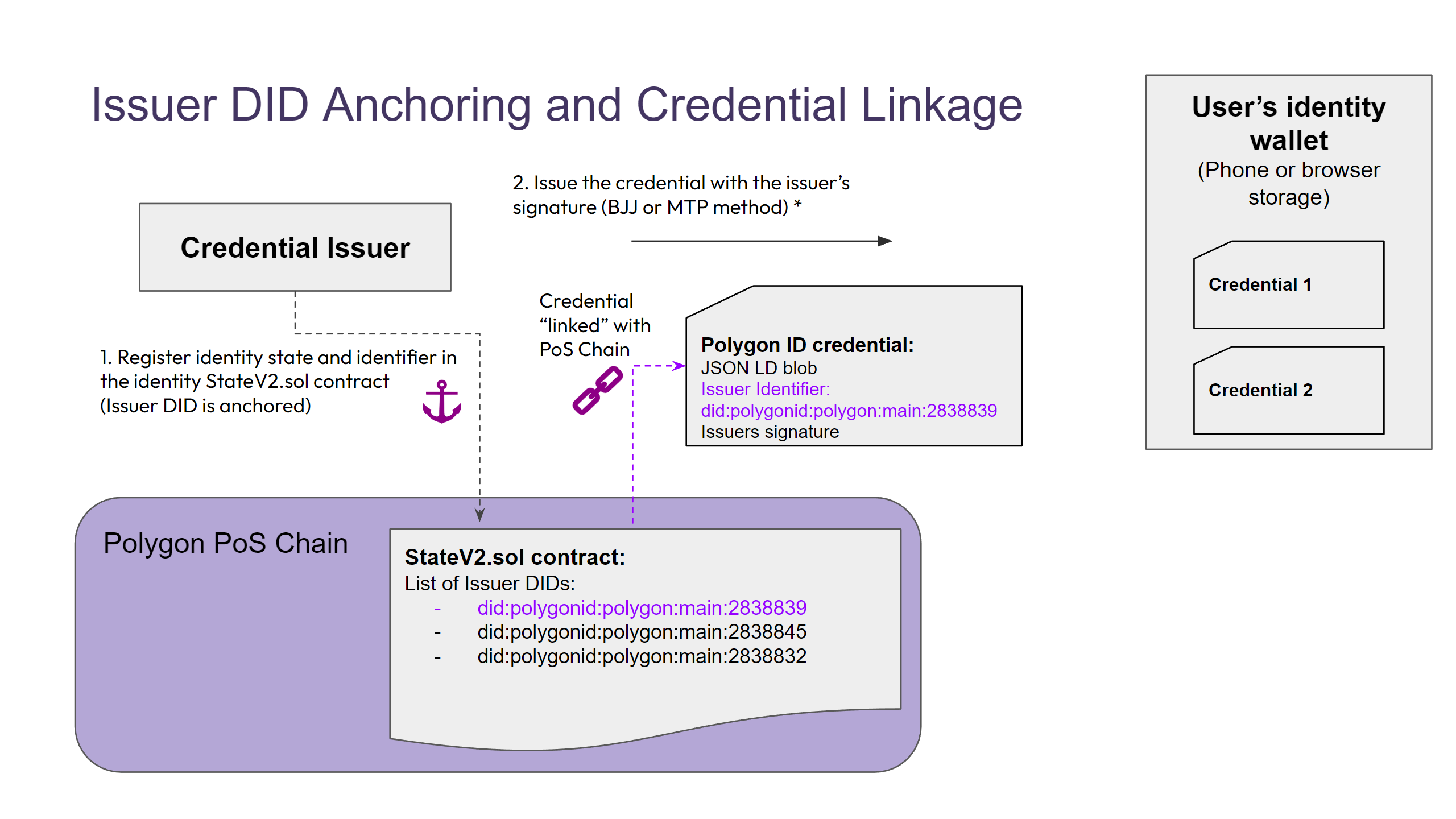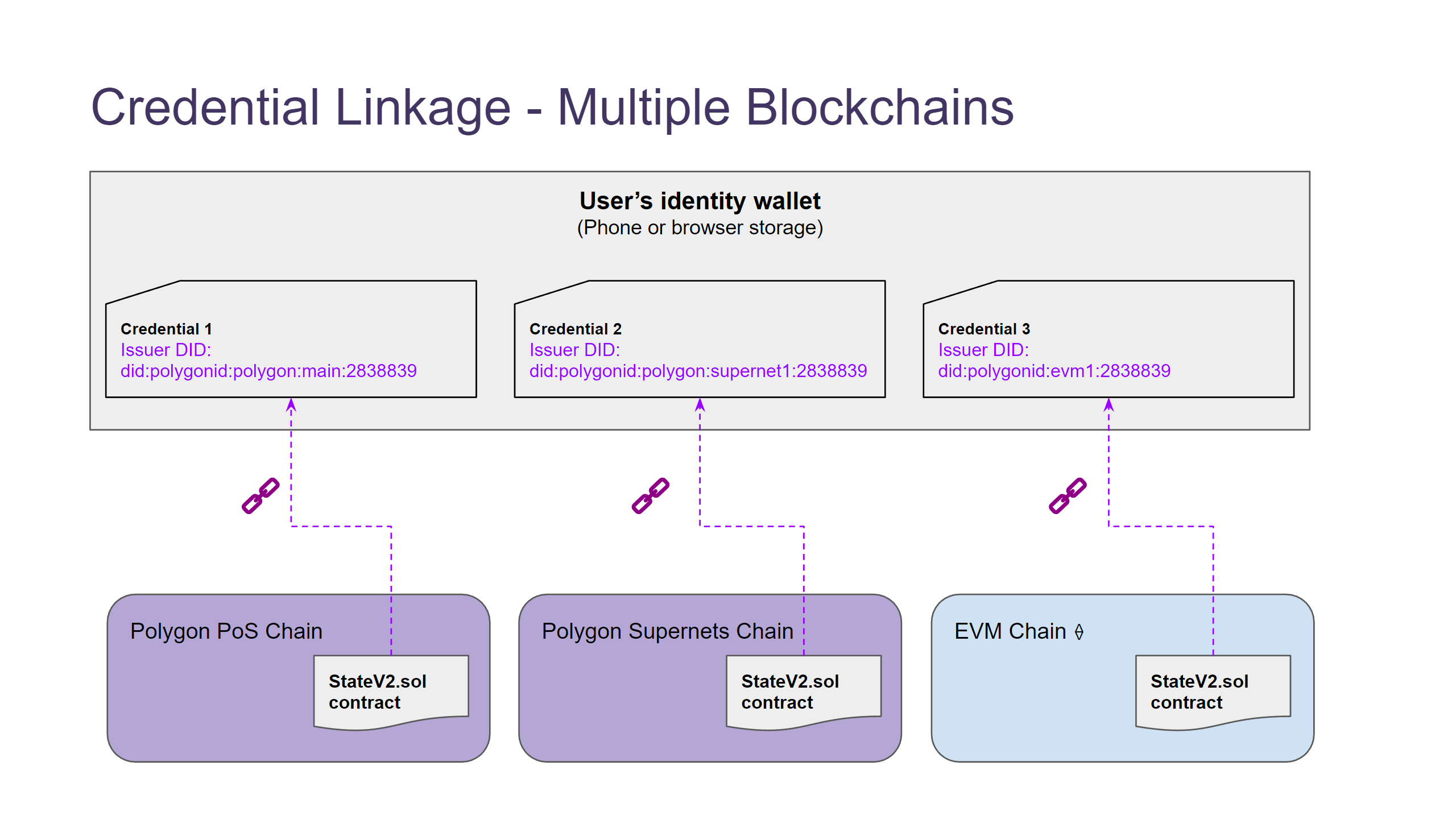Credential Linkage
There are 2 types of relationships between credentials and their issuers:
Issuer DID anchoring: as an issuer of credentials, issuers can choose to just leave their identifier in the genesis state. However, it is recommended that they publish their issuer DID on-chain for visibility and traceability purposes. This is done by calling the “Transit State function” so that the issuer can register their identity state and identifier in the identity
StateV2.solcontract. At this point, we can consider that the Issuer DID is anchored.Credential Linkage: after the issuer’s DID is anchored to the blockchain, then the issuer can generate credentials with its identifier and signature (using either the BJJ or MTP, see credential issuance methods for more). At this point, we can consider that the credential has a linkage to the blockchain in which the issuer registered its DID.

If the credential is issued using the MTP method, then the credential data is also “anchored” (via an indirect merkle tree proof) to the blockchain. Otherwise, only the Issuer’s DID is anchored to the blockchain.
Credential Linkage to Different Blockchains
Credentials could be linked to different Ethereum Virtual Machine (EVM) blockchains, they are not limited to only being linked to the Polygon Mainnet when they are issued. For instance, credentials could be linked to a Supernets chain or another EVM chain. The issuer state contract could be deployed to other EVM-compatible chains, and verifiers could validate the proofs from these credentials as long as they have access to the particular chain.
Credential linkage is only supported for a single chain for each credential (a credential cannot be linked to multiple blockchains at the same time).
